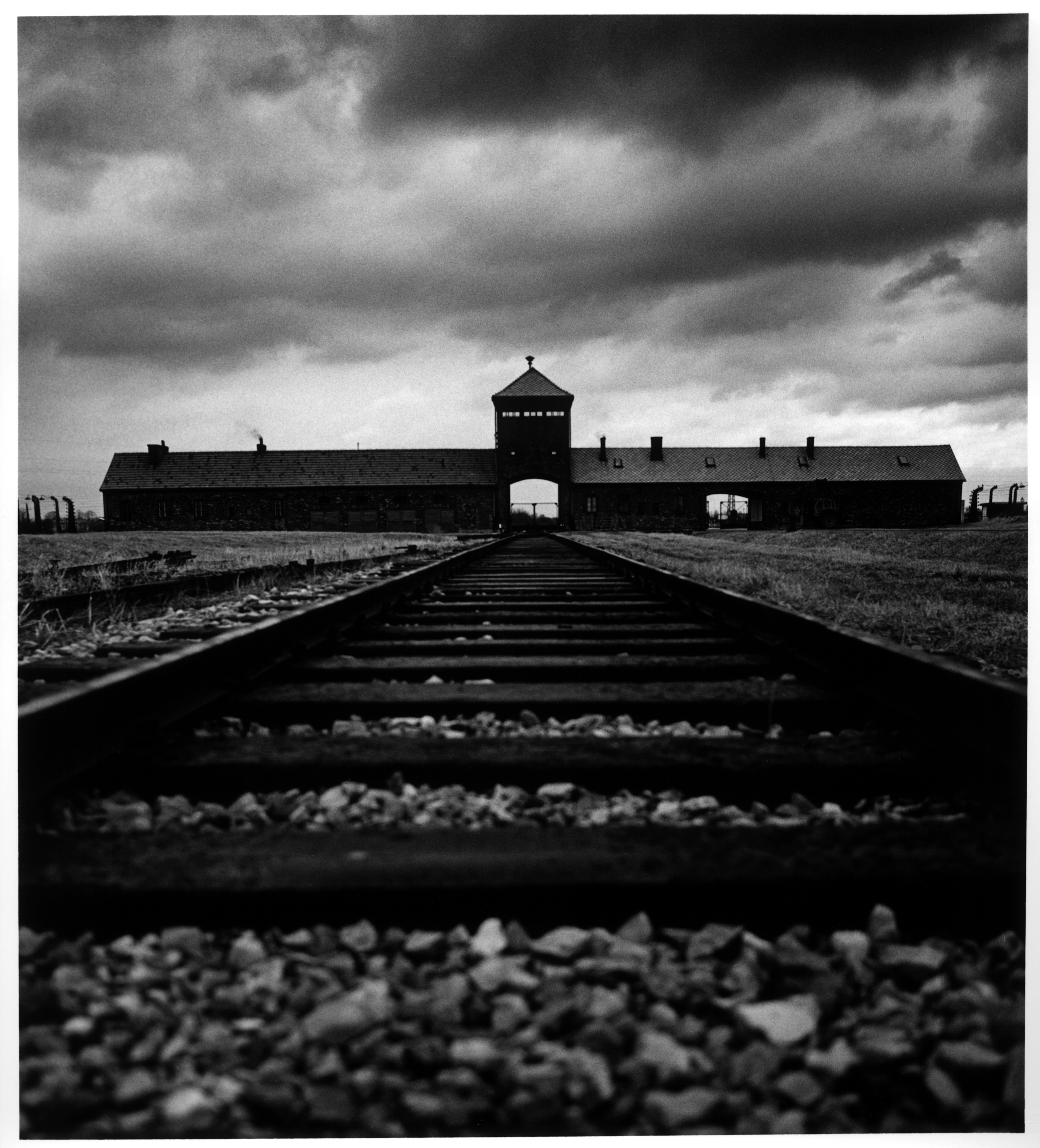 Tracks and Death Camp (c) Michael Kenna Never-to-be-forgotten photo exhibit at Carlsbad Library CARLSBAD, Calif.—When you first enter the Cannon Art Gallery at the Carlsbad Library on Dove Street in Carlsbad you become aware of a series of black and white photos quietly hanging on the walls. However, a closer look guides you into becoming a witness to one of the most shocking times in the history of man—“The Holocaust”. The photos were taken by Michael Kenna over a period of ten years in 24 concentration camps located in nine countries. The photos are simple and quiet. But they evoke a feeling of horror and remorse as one examines simple black and white photos of a pile of shoes, or a picture labeled “crematorium” where you know that millions of human beings were forever erased from the pages of mankind. |
||
|
5/9/07
SDJW Report International and National *Commentary: Americans support Israel—with their words at least *Young Russian readers learn to read Hebrew quicker than Hebrew or Russian speakers *Congressman Bob Filner (D-San Diego) joins the 'Paycheck Fairness' campaign. Regional and Local *A photo exhibit impossible to forget Daily Features Jews in the News Jewish Grapevine Jewish Lifestyles *Selecting the wedding gown For Your Reference San Diego Jewish Community Calendar San Diego Jewish Community Directory Advertisements Anderson Travel |
There are photos of the barbed wire perimeter fences and barracks which clearly tell the viewer of the filth and despair which was imposed upon prisoners whose greatest crime was being of a different religion, or mind set, or ethnic group—nothing more. Although photographed within the last decade, one picture showed a rubbish heap that contained empty cans labeled “ZYKLON"— the gas that was used to end the lives of the innocent. There was one photo simply labeled “Dissection Table," which to me was a chilling reminder of Dr. Mengele who escaped justice by being protected by a South American government and then passing on before he could be apprehended. There are two important areas tucked away that should not be overlooked. In a reading nook, there are photos of life in the various ghettos in Poland during the late 30’s and early 40’s. |
|
|
Here were the lives of Jewish people prior to being herded into the concentration camps. Some photos are of beautiful Jewish children of various ages during this same time period. One wonders grimly how many of them survived.
The second
area houses a video collection including a variety of films of survivors talking
about their experiences. At the height of the Holocaust, during World War II, several Jewish leaders, rabbis and others, put forth a suggestion to both President Franklin D. Roosevelt and Air Force General Hap Arnold. They urged that on one of the bombing raids that were being conducted in the various areas of Europe, that the railroad tracks leading to the concentration camps could be targeted and destroyed. This would stop the transportation of innocent individuals to their final demise. The suggestion was rejected by General Arnold because “It is a non-military target”. Later in the hostilities a railroad station in Austria was bombed as a military target. Coincidently, on the tracks there was a trainload of refugees waiting to be shipped to Auschwitz. The terminal was so badly damaged that the train never left the station. The people on board never left Austria and they survived the war to tell their story. Only 80 of Kenna’s 10,000 photos are on display. How can such a relatively small number of photos tell such a long and dramatic tale of humiliation and abuse? However, the photos quietly succeed. And this is important. With the passage of time survivors of the Holocaust are less and less able to give witness to the atrocities perpetrated on humanity. In addition there is a growing movement to deny that it ever occurred. It therefore becomes even of greater importance to educate future generations of the inhumanity committed upon humanity. This fact has been stressed by many of the remarks noted in the “Comments” book by visitors. Such was the objective, espoused by Karen McGuire, curator of expositions, at the Cannon Art Gallery of the Carlsbad Public Library. After 9/11 McGuire felt that the need was immediate. When she learned of this touing exhibition, organized by Patrimoine Photographique, Paris, she arranged to bring it to Carlsbad.
Photographer Michael Kenna will be the guest speaker in the library's Schulman
Auditorium at 6pm Saturday evening, June 2, the evening before the exhibition
closes. Seating is limited. __________________________________________________
Americans support Israel—with their words at least ENCINITAS, Calif. —The two leading partisan pollsters, Republican-leaning Public Opinion Strategies and Democrat-leaning Greenberg Quinlan Rosner Research conducted a survey (with link to questionnaire and results) of U.S. “opinion elite” attitude toward Israel. Opinion elite is loosely defined as college grad or post-graduate, all earning above $75,000, 99% saying they will vote in 2008,most regular readers of major newspapers, newsmagazines and TV news viewers. The result is comforting to its sponsor, the pro-Israel Israel Project. Support for Israel is at its highest since 2002, 63% very favorable toward Israel, an increase of 5%. 26% are very favorable toward the Palestinians, a decline from 31% in 2002. Focusing, when competing for support in “the ongoing conflict between Israel and the Palestinians” 65% support Israel but only 10% the Palestinians. Further focusing reveals attitudes toward who is “more responsible for instability in the Middle East”: 12% “Israel and its policies”, 73% “Islamic extremism.” 72% think “Even though the Palestinians have formed a unity government with both Hamas and Fatah, the United States should not resume sending aid to the Palestinian Authority until the new Palestinian government ends the culture of hate that teaches children to hate the west and glorify suicide bombers.” And, only 33% think “Now that the Palestinians have formed a unity government with both Hamas and Fatah, the United States should resume sending financial aid to the Palestinian Authority.” 31% of the respondents are Republican, 37% Democrat, 31% Independent about 1/3rd leaning Republican, 1/3rd leaning Democrat and 1/3rd of other independent leanings. Self-declaration has 30% conservative, 29% liberal, and 40% moderate. While this poll is comforting to supporters of Israel, there is a key question not asked that would provide greater comfort. Since most Democrats and Independents have given up on the U.S. involvement in Iraq, how much can Israel depend upon their support when the going is tough for Israel? Talk is cheap. Blood and guts are dear.
(Return to top) HAIFA, Israel (Publicity Release) Children whose mother tongue is Russian and who acquired literacy in their home language before entering first grade received higher grades on reading skills tests than their peers who speak only Hebrew or those who speak Russian but have not learned how to read it. This was revealed in a study recently completed at the University of Haifa. The researcher, Dr. Mila Schwartz, pointed out that because of the linguistic complexity of the Russian language, it can be deduced that knowing how to read and write Russian will give children an advantage when learning to read other languages. The research, which was conducted under the direction of Dr. Mark Leikin and Prof. David Share, evaluated 129 first graders that were divided into three groups: bilingual Hebrew and Russian speakers who had acquired literacy skills in Russian before being exposed to Hebrew reading skills; bilingual children who spoke but had not learned how to read Russian; and monolingual Hebrew speakers. The research involved administering tests which evaluated the children's language skills at the beginning of first grade and tests that evaluated their reading and writing skills at the end of first grade. The results revealed that children who acquired Russian reading skills before learning to read Hebrew showed a distinct advantage over the other groups in their ability to distinguish between sounds and greater fluency and accuracy in reading. The research did not find any differences in the reading skills of monolingual Hebrew speakers and bilingual Hebrew and Russian speakers who did not read Russian. According to Dr. Schwartz, this result supports the existing theories that bilingualism alone does not enhance development of reading skills but that reading skill acquisition is easier when a child already knows how to read another language. In addition, the research evaluated 107 fifth grade children, who were divided into the same three groups. In this part of the research the acquisition of English reading skills was evaluated. As in the first part of the study, a distinct advantage was recorded in reading acquisition among the group of children who had learned to read Russian first. According to Dr. Schwartz, even those who learned how to read Russian but rarely use it showed increased abilities in reading acquisition. She also added that most of the research done in this field has evaluated knowing how to read English as being helpful in acquiring reading skills. However, as English is considered an "irregular language" in terms of the connection between letters and sounds, it was difficult to draw conclusions about knowing how to read English as being an aid when acquiring reading skills. Russian, on the other hand, is considered a unique language in terms of its linguistic structure and connection between letters and sounds and was therefore found to be helpful in later acquiring reading skills in other languages.
The foregoing article was
provided by the University of Haifa. Filner joins 'Paycheck Fairness'
effort to aid women "Every April, we mark the time of year when the wages paid to American women 'catch up' to the wages paid to men from the previous year. It takes 16 months for a woman being paid average wages to make the same amount as a man paid average wages made in 12 months!" said Congressman Filner. The exact date this year was April 24th. According to the Censes Bureau, women still earn only approximately 77 % as much as men did in 2006. African-American women earned 66% on the dollar compared to white men, and Hispanic women earned 55%. According to the National Committee on Pay Equity, working women stand to lose as much as $250,000 over the course of their career because of unequal pay practices. The Paycheck Fairness Act takes meaningful steps to assist women in negotiation for higher pay, creates strong incentives for employers to follow the law, and strengthens enforcement efforts. "This is a
common sense issue that affects all working women and their families. By
eliminating unfair treatment in the labor market, we can help families to
gain the resources they need to ensure that their children have access to a
better future," concluded Filner.
(Return to top)
AROUND THE TOWN—
IN MEMORY—Sally Goldman, 95, of Encinitas died Sunday.
A brief
obituary ran in today's San Diego Union-Tribune.
Selecting the wedding gown
Third in the "Father of the Bride" Series Some brides want to look like a princess royal. Others prefer the look of a cream puff. Still others go for the anti-bellum look, enormous skirts made from miles of silken fabric. Well, not my daughter. No beads or lace for her. She had this vision of Jean Harlow back in the ‘30's. Tall and willowy, thin and sexy. You know, one of those form fitting gowns that leave little to the imagination. I prefer to think of it as a backless, frontless number with a long veil. I’m not sure how my own father would have reacted to his granddaughter so lightly garbed. Let’s hope the rabbi is on the liberal side. Now you may ask, what on earth was the father-of-the-bride doing in this situation in the first place? Well, this is a new modern generation where even father gets a say in such matters or so my daughter informed me as we drove to an Orange County bridal salon. My wife and daughter had done much of the leg work. They had scoured the local scene for the appropriate wedding dress. Finding none, their next stop was Orange County and a shop called Mon Ami. Let’s be clear, this bridal boutique was certainly not "my friend" in any language The two women had tried on dozens and dozens of bridal outfits before settling on six. Now they needed reinforcements to help them make the crucial decision. With Aunt Sharon back in Washington, D.C. and her brides maids scattered across the U.S., good old dad was called on to bring Solomon-like decision making onto the scene. So there I was seated amidst literally hundreds of bridal gowns awaiting my daughter’s fashion show. In the meantime, there were numerous other would be brides and their mothers going through the same act. It was quite a scene to observe. Some of the brides were exquisite. Others were...works in progress. One young lady, who was as wide as she was tall, was complaining to her sales representative. "I don’t know," she said, "This one makes me look fat." "Oh my dear," responded the well-trained sales woman, "there are brides who would kill to have your figure. You have a darling shape." I don’t know how she was able to speak those words without her nose growing two inches longer. I had to turn away to contain my self, model of restraint that I am. What was I doing here? I kept asking myself as my daughter came from the dressing room to do another star turn. In the end, it isn’t about what you want. It is about what makes your daughter happy, what she feels good in and what the bank account will allow. Well, forget about the bank account when you discuss modern marriages. Her mother thinks this gown is okay and this is the one she loves. The rabbi is young. He can withstand it, I rationalized. The die was cast, so to speak. Uncle Abe passed out at my wedding many years ago, but they claimed that was from the heat. So we would just have to wait to see how this ceremony goes. My hope was that the groom’s family was not too conservative in their thinking and acceptance. As father-of-the-bride, I had thrown all caution to the wind. (Return to top) |
||

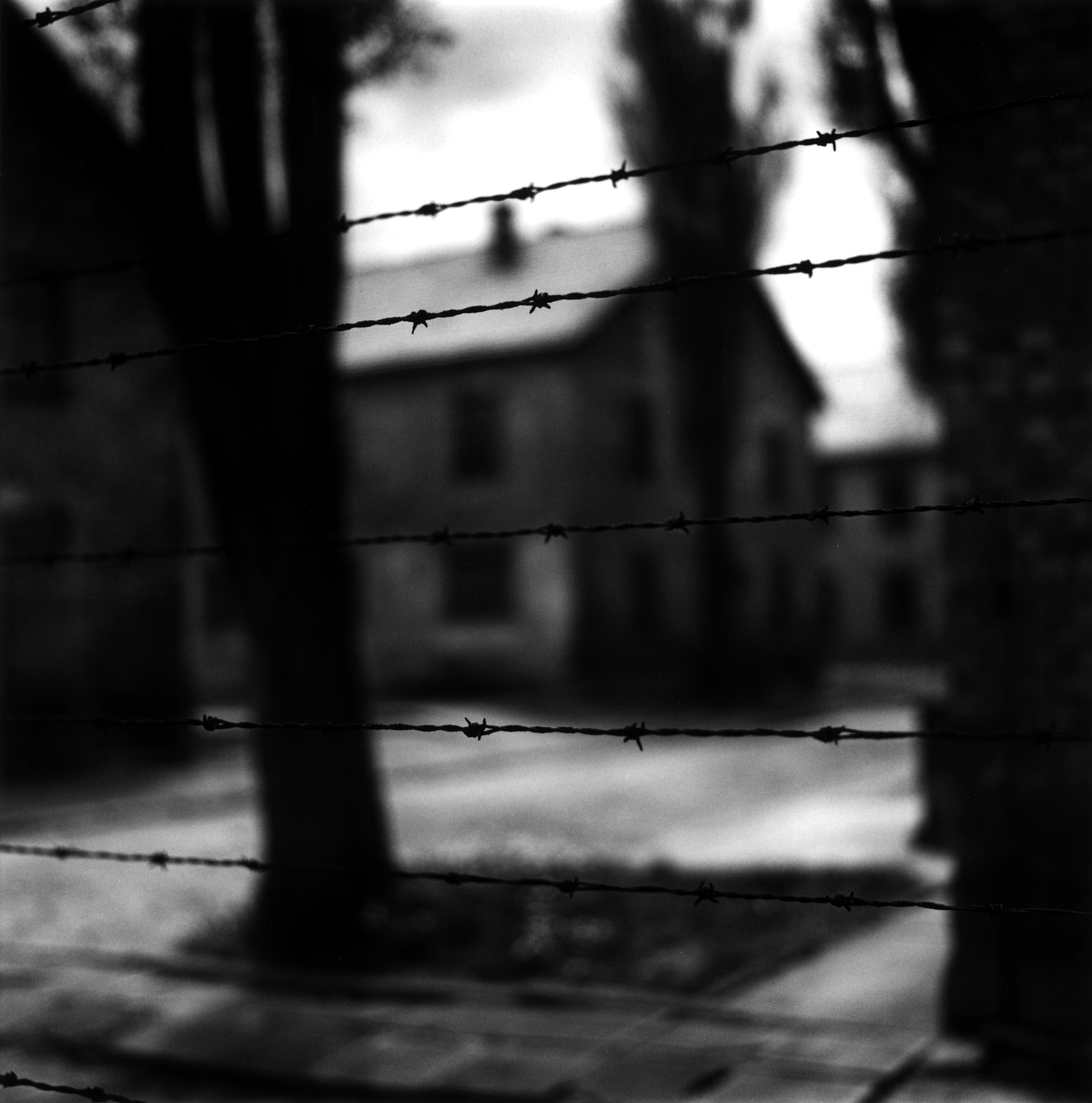


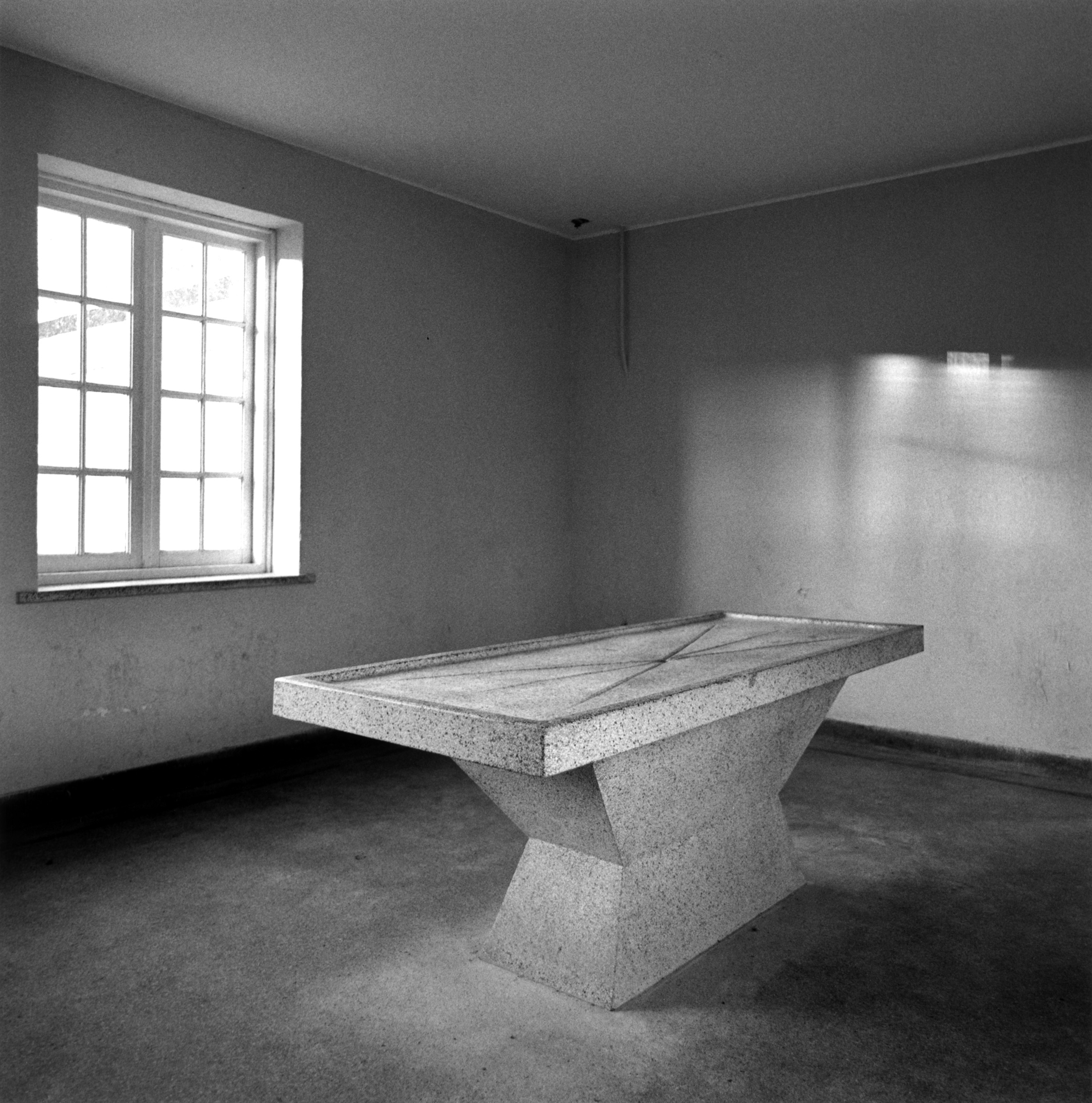
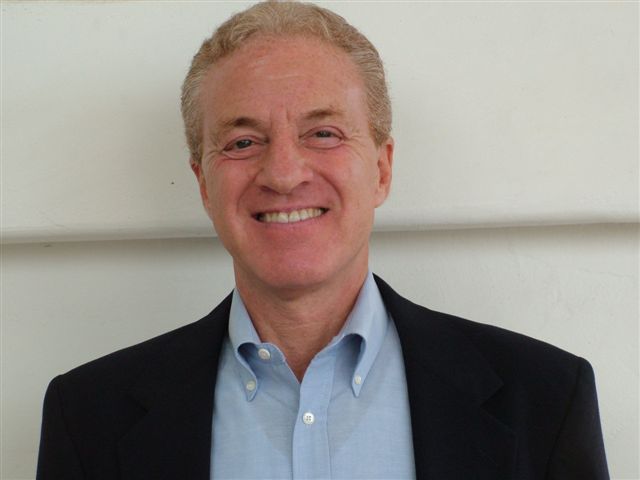 Freedom
at Issue
Freedom
at Issue


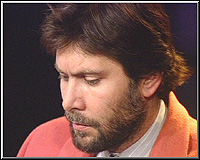 ISRAEL-SAN
DIEGO CONNECTIONS—Kibbutznik Naftali Lahav of Mizra will be teaching two
courses at "College for Kids" that meets over the summer at Palomar College—one
about constructing and playing a one-string guitar; the other about constructing
and playing tree-string harps. The program extends from June 23 through
July 31 and Lahav, obviously entrepreneurial, writes to say he hopes he can do
some private tutoring as well in the fine art of beginning instrument making.
He'll be staying during his visit in Vista at the home of Coleen Odell and
family, with whom he has been corresponding for six months following an on-line
contact. Those seeking to get in touch with Lehav may do so via Odell at
ISRAEL-SAN
DIEGO CONNECTIONS—Kibbutznik Naftali Lahav of Mizra will be teaching two
courses at "College for Kids" that meets over the summer at Palomar College—one
about constructing and playing a one-string guitar; the other about constructing
and playing tree-string harps. The program extends from June 23 through
July 31 and Lahav, obviously entrepreneurial, writes to say he hopes he can do
some private tutoring as well in the fine art of beginning instrument making.
He'll be staying during his visit in Vista at the home of Coleen Odell and
family, with whom he has been corresponding for six months following an on-line
contact. Those seeking to get in touch with Lehav may do so via Odell at